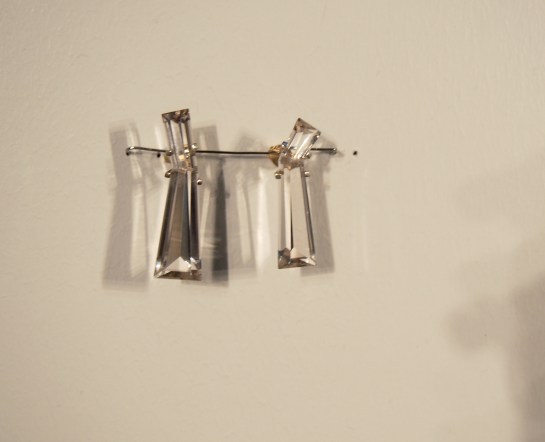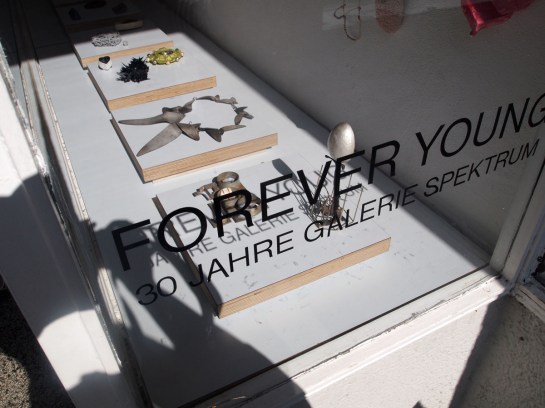Seeing Estonia through Cult Jewellery: Reflections of the exhibition, Estonishing ! 13° from Estonia
To highlight the opening of Estonishing ! 13° in Tallinn that happened on the 16th of November 2016, I’m posting this text I wrote originally for SIRP magazine that was translated into Estonian. Here it is in english for the first time. The original debut of this exhibition took place at SCHMUCK 2016 in the Handwerksmesse in Munich, Germany, 24.02 – 01.03.2016
text by Kellie Riggs

The Contemporary Jewellery community is not big, but it is unique. It remains to hover somewhere above other, similar creative fields like fashion, design, art and craft. Never quite assimilating, it is instead a combination of the four, taking the best aspects from each of these groups back to its own special atmosphere and turning it into something amazing. The field, its artists and community all can feel like a well-kept secret hidden in plain sight. But in fact, it spans every continent on the globe, found tucked in pockets and hubs rich with cultural relevance and a collective will to express and adorn.
It is one week a year in Munich, Germany that contemporary jewellery’s modesty steps aside and the field (both cultural and academic) is able to come together as one global community acting as a fortified front. It shows the best of itself in broad daylight. Its members flock from every corner of the world, becoming pilgrims. And the jewellery on display itself become relics, housed in specially created spaces that only Munich Jewellery Week can inspire and cultivate. It is all rather cult, as its followers – students, artists, enthusiasts, and collectors alike – have a specific kind of admiration and devotion that can be felt buzzing on the streets of Munich from exhibition to exhibition.
Over the course of the last ten years, Munich Jewellery Week (as it has only recently been known to be called, coinciding with the SCHMUCK event) has grown exponentially. Starting with around ten collateral exhibitions throughout the city in 2006, MJW 2016 boasted over seventy. Whether they are academic classes or artist-run collectives, many diverse international jewellery groups come to show what they do via independent or gallery represented exhibitions. And when done right, they are able to demonstrate particular cultural tendencies in jewellery at large, and illustrate more sensitive cultural perspectives through the particular expressiveness that jewellery provides. Good Contemporary Jewellery is always a lens through which to look into the subtleties of other cultures, national or local, big or small. It is an irreplaceable means to understand how different cultures or subcultures feel about certain elusive subjects – many of which are quite intimate – as jewellery is a relatively intimate affair to begin with.
So what does it mean for jewellery to be from a certain place? From Estonia? What kind of illustration does the world have of this country through the jewellery that comes out of it? I myself can only speak to an outsider’s perspective and reflect on the impression that’s been made in places like Munich where Estonian artists have been able to show face together against the backdrop of a contrasting cultural framework. In one way or another they act as a collective ambassador, providing one of the few and probably most profound windows through which one can catch a glimpse of this fascinating (and largely mysterious) land. In all actuality, Estonia and Estonian Contemporary Jewellery remain the subject of intrigue in the international Contemporary Jewellery community; there seems to be a special kind of force field that surrounds it, one that recalls magic and evokes a curious kind of arousal.
This year in Munich, Estonian jewellery artists could be found in many places. The work of Nils Hint, more blacksmith than jeweler, was included in one of the highest quality international exhibitions in the city, (IM)PRINT. Three of the more internationally prolific artists were selected for the prestigious juried SCHMUCK exhibition that takes place every year in the Handwerksmesse Exhibition Hall: Kadri Mälk, Tanel Veenre, and Linda Al-Assi. And Darja Popolitova, who just recently graduated from the Estonian Academy of Arts, was selected for the congruent TALENTE exhibition. But somewhere within the maze of uninspired booths of international jewellery galleries that surrounded these shows, the real gem could be found: the exhibition, “ESTONISHING !”, presented by Thomas Cohn Gallery, co-curated by the gallerist himself, and artist, Tanel Veenre. The magnetism of the work of this group of Estonian artists was so strong that it could be felt in São Paulo, Brazil (where Mr. Cohn is located), and convincing enough to come together for exhibition in Munich. As far as I know, it was also Mr. Cohn’s first year presenting the gallery at the Handwerksmesse, which is a big deal.
That right there is magic. Some kind of supernatural connection brought these seemingly disparate people together. And speaking of connection, what is it that connects these thirteen Estonian artists to one another? I find this question to be often reoccurring, as there is some kind of pull, something very grounded, something only sensed but invisible, that ties Estonian work together in a way that is so unique, it is simply not found in other Contemporary Jewellry circles in other countries. They appear spiritually united, and at this point in the history of Contemporary Jewellery, this is now universally recognized. But how?
This very question of connection was precisely what Veenre sought to examine when organizing the exhibition. He asked: Is it patience, an endeavour for holiness, assurance, or hope that connects us? Is is melancholy? These questions are perhaps not meant to be solved, rendering a smart and lyrical way to ask the viewer to really look into the jewellery on display and investigate their vulnerability and universality.
This is an intriguing question, and quite a responsible line of inquiry considering whom it’s coming from. Throughout the years, Veenre has not only unofficially been the spokesperson for Estonian Jewellery as a whole by giving a face and a voice to this special sect of the jewellery field to international eyes and ears – but he is also one of the few brave artists in general leading the way for change and new relevancy for the field of Contemporary Jewellery as a whole, by more closely associating it to other art and cultural genres. And as such, the Estonian team has followed with a reputation of taking itself seriously (having high quality exhibitions, publications, and have created a solid identity) while working with and enjoying a special sense of fantasy, mysticism and poetry that is always captivating and uniquely their own.
Some of the more intriguing and relevant work included in ESTONISHING ! came from Nils Hint, a younger face in the field that is getting noticed on an international level more and more steadily for his flattened iron work. He takes ready-made tools like wrenches from the scrap yard to join and then flatten using a power hammer and other blacksmithing techniques. The more striking pieces in this exhibition however were those more three-dimensional, utilizing iron elements as means to draw. Purposefully phallic or cross-like objects (like his Mahine1 (Manful) brooch, forged iron, 2015) were created to imply a “childish or primitive kind of street art, like dicks drawn on the wall,” says the artist.
Alternatively, Ketli Tiitsar and her Teine Olemus (Second Nature) brooches and necklace, made from ash wood, silver, pigment (2016) added a more internal sensibility to the show. The pieces, visually delicate and alive speak about Tiitsar’s personal memory utilizing materials from places that she knows, in an intimate manner of speaking. The wood recalls her family’s tradition of cutting firewood to heat their home, and in a sense she carries on with that repetitive tradition through her practice while paying respect to it at the same time. They are also very hip and modern pieces which is an excellent juxtaposition to the sentimentality involved.
Maarja Niinemägi’s simple and elegant engraved stone brooches, Ööparved (Night Floats), are also noteworthy for their pure and natural qualities. Essentially collages made from milky opal, buffalo horn, mother of pearl, silver and gold (2013), they are made to inspire a sense of grouping and collective metaphorical floating.
Although just three examples here, from the outside, it looks as though it must also be nature that connects most of these Estonian jewellery artists. What runs true and deep in someone sometimes goes personally unnoticed or unsaid because it is so much a part of them; their bond to nature didn’t need to be verbalized to be felt.
And what about the connection made by their fearless leader, Kadri Mälk? Veenre poses this question as well, as all the artists are alumni of the Estonian Academy of Arts from the jewellery and Blacksmithing department, twelve of the thirteen being Mälk’s former students. The veneration of this woman, who has been a professor at EAA for a long long while, reverberates far beyond the confines of Estonia and is inextricable from the work of any of her alumni no matter how far it travels. Needless to say Mälk herself was also a part of this exhibition, her dark pieces swirling with qualities of secrecy and fascination seem to provide us a window into her soul. This characteristic, rarely found to be so strong in Contemporary Jewellery, illicits a feeling of witchcraft and seduction, further breathing life into the cult-like nature Estonian Contemporary Jewellery possesses. It is safe to say that today’s Estonian jewellers are their own leg of the jewellery cult (Cult Jewellery, let’s go on to call it), and they have the world’s attention.

Nils Hint

Maarja Niinemägi



Ketli Tiitsar


The exhibition is accompanied by a catalogue designed by Asko and Julia Maria Künnap. In addition to presenting the work, each artist reveals something about themselves through one Estonian word and an illustrative image.
Curators: Thomas Cohn and Tanel Veenre
Participating artists:
Kadri Mälk, Tanel Veenre, Piret Hirv, Kristiina Laurits, Villu Plink, Nils Hint, Sofja Hallik, Eve Margus-Villems, Darja Popolitova, Maria Valdma, Julia Maria Künnap, Maarja Niinemägi, Ketli Tiitsar
The design of the exhibition is a collaboration by all the participating artists.
Supporters: Thomas Cohn, Cultural Endowment of Estonia, Susan Cummins, Helena Pahlman, Mart Kalm, Law Office Ehasoo&Partners, SA Noor Ehe, Emil Urbel







































































































